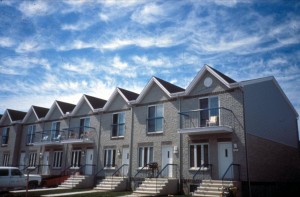Every small rebound in the number of new houses built is followed by a flurry of articles about how the housing industry is poised to make a comeback. But if my developer friend Joe Duckworth is right, the U.S. housing market is not experiencing a correction but a major restructuring. With college graduates heavily in debt—and high school graduates without well-paying jobs—the first-time buyer market is stalled, and existing homeowners, who might have “moved up,” are stalled, too. The future, according to Joe, is likely to include many more renters than in the last several decades, and so-called starter homes are likely to become permanent homes, as they were in the 1950s when a Levittown house would last a family’s lifetime. Twenty-two years ago, Avi Friedman and I designed the Grow Home, a 14-foot wide row house only 896 square feet in area. Over the next decade they were built in large numbers in the Montreal suburbs with a price tag of around C$60,000 ($95,000 in present day U.S. dollars). We intended the Grow Home as a lower rung for young families beginning their climb up the housing ladder. Today, that ladder appears considerably less tall, and what was designed as an “affordable home” looks like it may be the new normal.


In “affordable” markets (as per the “Demographia” Reports) “trickle down” suburban housing would still be a preferred option to most young people. The cost of urban land is the main problem of the issue of affordability or un-affordability, building tiny little boxes is the wrong response – regulatory reform to address inflated land prices is what is really necessary.
Smaller house = smaller lot= reduction in selling price. Does not contradict need for regulatory reform, although good luck with that.